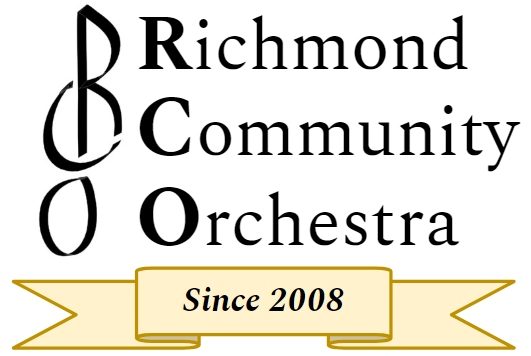Monday, June 10 * 7:00 p.m.
Glen Miller Park Bandshell
2200 E. Main St., Richmond
Rain date: June 17
Bring a chair, blanket, a picnic – or all three!
The RCO closes out its 2023-24 season with a collection of fun popular music and light classics.
We are grateful for recent support from the
A. THEODORE & MARCELINE S. HALSTEAD
DONOR ADVISED FUND
It’s about Time – Arr. Michael Story
This medley of three pop songs has numbers that relate to time. First up is Gershwin’s “Summertime” from his opera Porgy and Bess, followed by “As Time Goes By,” written by Herman Hupfeld and used in the classic movie Casablanca. We end with a more modern tune – “Time after Time” written by Rob Hyman and Cyndi Lauper in 1983. Even though that is 41 years ago, it is “new” for an orchestra.
Grand March from AIDA – Giuseppe Verdi (1813-1901); arr. Richard Ling
This opera was first performed on Christmas Eve 1871 for the opening of the Suez Canal in Egypt. In the opera, after the Egyptians defeat Ethiopia, they march the spoils back to Egypt, including Princess Aida. Many times when this opera is performed, horses and exotic animals are paraded across the stage – including elephants.
Tico Tico no fuba’ – Zequinha de Abreu (1880-1935)
The title translates to “rufous-collared sparrow in the cornmeal.” This Brazilian song was written in 1917.
Marche Slave – Peter Tchaikovsky (1840-1893); arr. C. Paul Herfurth
“Marche Slave” (pronounced “slav”) is really a Slavonic march, not Russian. In 1876 during the war between Serbia and the Ottoman Empire, Tchaikovsky was asked to write this piece to benefit the Red Cross Society.
Pie in the Face Polka – Henry Mancini (1924-1994)
This lively piece was composed for the 1965 movie The Great Race, written and directed by Blake Edwards. The pie-fight scene took five days to shoot and cost $200,000, of which $18,000 went toward 4,000 pies. Shooting lasted over a weekend, and every detail of pie on set and costumes had to be recreated each day. When Edwards finally yelled “Cut!” he was hit by 200 pies hidden by the cast and crew. The 1927 film The Battle of the Century with Laurel and Hardy used 3,000 pies in one day of shooting.
The Sea Hawk – Erich Korngold (1897-1957); arr. by Jerry Brubaker
This suite comes from the movie of the same name written in 1940. Korngold was an Austrian-born composer who came to the U.S. in 1934, fleeing the rise of the Nazi regime. Korngold was a serious composer in pre-war Europe yet is more known for his Hollywood film scores, especially swashbucklers like The Adventures of Robin Hood.
Tahiti Trot – Vincent Youmans; orchestrated by Dmitri Shostakovich (1906-1975); arr. by Jerry Brubaker
You will recognize the tune as “Tea for Two” written in 1926 for the musical No, No, Nanette. The Russian composer Shostakovich was challenged by the conductor Nickolai Malko to orchestrate this pop tune in under an hour. He did it in 40-45 minutes.
Irving Berlin’s America – Arr. by Roger Emerson and Paul Murtha
We close with a medley of some of Irving Berlin’s (1888-1989) most famous songs: “There’s No Business Like Show Business,” “Alexander’s Ragtime Band,” “Puttin’ On the Ritz,” “Blue Skies,” “Always,” and “God Bless America.”
Sound engineer for tonight’s concert: Jeff Templeton
